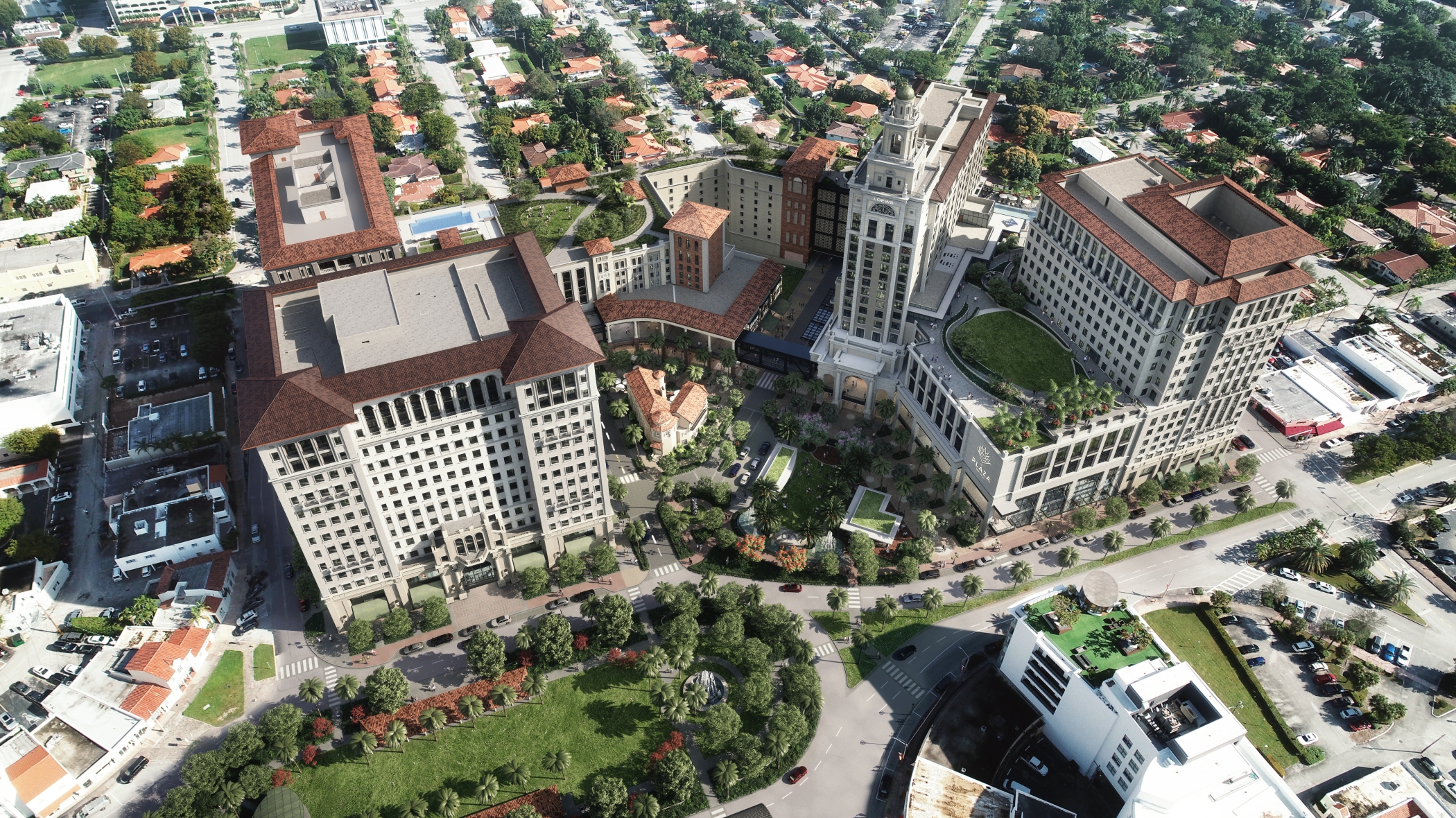On any given day at The Plaza Coral Gables in South Florida, residents walk from their apartments to nearby offices, grab coffee downstairs or stroll through tree-lined retail promenades before catching a conference call upstairs.
To the casual observer, it may look like a naturally flowing urban neighborhood — but its efficiency is by design. Behind the scenes, an integrated team manages the site as a single organism, blurring the lines between property types. That’s the goal of The Mixx, a new division within real estate services firm JLL that was formed to manage complex, multi-asset real estate environments like Coral Gables — and now OC Vibe, the $4 billion mixed-use development rising around the Honda Center in Anaheim, California.

JLL said The Mixx represents the firm's response to what’s vexed some property operators for years: how to manage retail, office, residential and public space as one ecosystem and not as silos. It consolidates placemaking, marketing, leasing and property management into a unified, standalone business within JLL supported by a leadership team from across disciplines and structured more like a design studio or start-up than a traditional corporate division.
“There was a recognition that the market lacked a solution for multi-asset class projects developed on a single piece of dirt,” Sean McNamara, the JLL executive who leads The Mixx, told CoStar News. “Everyone was bolting on services in a fragmented way. We knew we had to break that pattern.”
McNamara's background includes overseeing the repositioning and sale of San Francisco’s Transamerica Pyramid as well as holding various roles at Hines and Cushman & Wakefield that focused on complex, multi-asset real estate operations. He's using lessons learned to figure out how to meet a broader shift in real estate: As developers pursue walkable, 24-7 destinations to appeal to both tenants and institutional investors, the firms managing those sites are trying to become more like curators of mini-cities than traditional landlords.
The shift comes as investors increasingly pursue mixed-use development as a hedge against market swings. With one project generating revenue streams from multiple property types, the thinking goes, owners may have a better chance of weathering downturns in office or retail while maintaining cash flow from apartments, hotels or events.
But there's risk involved. Mixed-use districts are known for being difficult to get right. They require patient capital, deep collaboration between public and private stakeholders, and operators fluent in multiple property types — conditions that have sunk or stalled many past efforts.
Building The Mixx
So it may not be too surprising that the idea for The Mixx began not with a strategy session but with a misstep. McNamara said the initial attempt to unify JLL’s internal business lines ended in disagreement over how revenue and responsibilities would be split. “We were having the wrong conversation with the wrong people,” he recalled.
The breakthrough came during what he calls the “day of weird,” a facilitated retreat where brand strategists and property professionals imagined the ideal mixed-use operation from scratch that would blend functions that most firms still treat as a collection of separate parts with, say, retail run by one team, office by another.
The result was The Plaza Coral Gables. Though not the first JLL-managed project with multiple uses, it was the first site where The Mixx’s principles were fully deployed with integrated teams, deference to the project over individual brands, and a single and coalesced service interface for the client, owner and tequila conglomerate Agave Holdings, JLL said.
The Samueli family, owner of the NHL's Anaheim Ducks, is the team developing OC Vibe, a project poised to be The Mixx’s first on the West Coast. Managed by Lucas Ross, who has more than two decades of international experience running complex properties, the 100-acre Anaheim district is expected to bring more than 2 million square feet of new development including offices, housing, parks, venues and retail in the next decade. Construction is underway, and its early phases are set to open before the 2028 Olympics.

While OC Sports & Entertainment plans to continue to manage the Honda Center, JLL’s Mixx team aims to oversee the surrounding commercial and public areas. That includes retail plazas, restaurant corridors, a new office tower and 20 acres of green space and sports adjacency, making OC Vibe a proving ground for JLL’s new approach.
McNamara said the strategy is designed to work at properties elsewhere as well.
“We’re building a platform we can scale across the country,” he said. "It’s not enough to manage buildings anymore. You have to manage experiences.”
